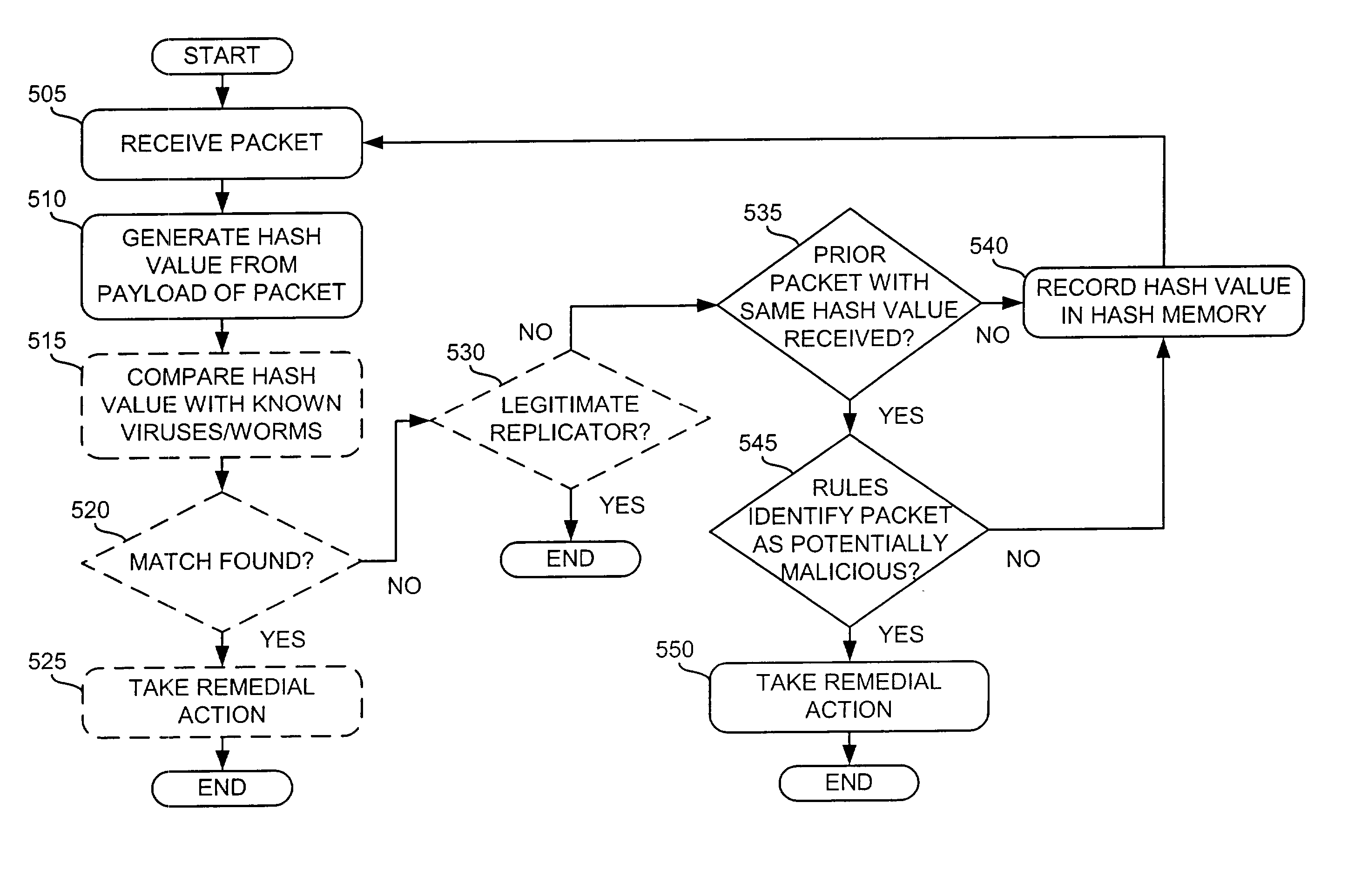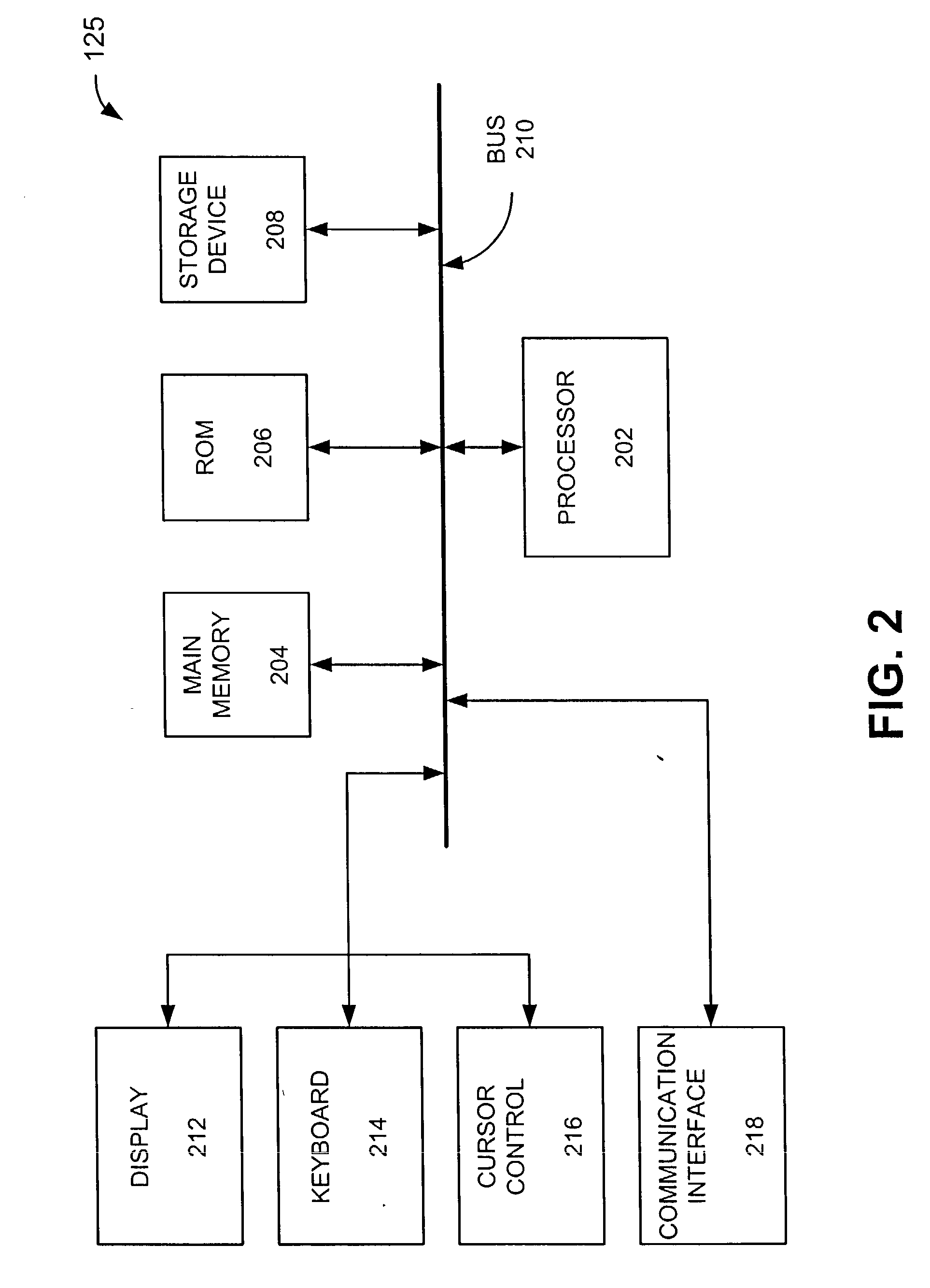Hash-based systems and methods for detecting, preventing, and tracing network worms and viruses
a network worm and virus technology, applied in the field of network security, can solve the problems of increasing the number of vulnerability points from which malicious individuals can launch attacks, increasing the size of the internet, and increasing the threat posed by individuals
- Summary
- Abstract
- Description
- Claims
- Application Information
AI Technical Summary
Problems solved by technology
Method used
Image
Examples
Embodiment Construction
refers to the accompanying drawings. The same reference numbers in different drawings may identify the same or similar elements. Also, the following detailed description does not limit the invention. Instead, the scope of the invention is defined by the appended claims and equivalents.
[0024] Systems and methods consistent with the present invention provide mechanisms to detect and / or prevent the transmission of malicious packets and trace the propagation of the malicious packets through a network. Malicious packets, as used herein, may include viruses, worms, and other types of data with duplicated content, such as illegal mass e-mail (e.g., spam), that are repeatedly transmitted through a network.
[0025] According to implementations consistent with the present invention, the content of a packet may be hashed to trace the packet through a network. In other implementations, the header of a packet may be hashed. In yet other implementations, some combination of the content and the head...
PUM
 Login to View More
Login to View More Abstract
Description
Claims
Application Information
 Login to View More
Login to View More - R&D
- Intellectual Property
- Life Sciences
- Materials
- Tech Scout
- Unparalleled Data Quality
- Higher Quality Content
- 60% Fewer Hallucinations
Browse by: Latest US Patents, China's latest patents, Technical Efficacy Thesaurus, Application Domain, Technology Topic, Popular Technical Reports.
© 2025 PatSnap. All rights reserved.Legal|Privacy policy|Modern Slavery Act Transparency Statement|Sitemap|About US| Contact US: help@patsnap.com



